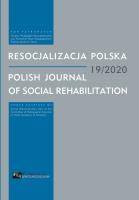Alcohol use disorder according to DSM-5 Opportunities and constraints resulting from changing diagnostic criteria
Alcohol use disorder according to DSM-5 Opportunities and constraints resulting from changing diagnostic criteria
Author(s): Robert ModrzyńskiSubject(s): Substance abuse and addiction
Published by: Fundacja Pedagogium
Keywords: alcohol use disorder;DSM-5; ICD-10;diagnostic criteria; alcohol addiction
Summary/Abstract: Another revision of the DSM manual (Diagnostics and Statistical Manual of MentalDisorders – DSM-5) appeared in 2013 and introduced far-reaching changes in the understanding of psychoactive substance use disorders. The most important break through concerns the understanding of alcohol use. The move away from a dichotomous, binary understandingof alcohol dependence and abuse has allowed the creation of a new diagnostic category ofalcohol use disorder (AUD). The article addresses the issue of changes in diagnostic criteria for alcohol use disorder inthe light of the latest DSM-5 classification. The location of the category of alcohol use disorder,its definition and diagnostic criteria will be presented. The author also compares the symptoms of alcohol use disorder according to DSM-5 with the corresponding ICD-10 International Statistical Classification of Diseases and Related Health Problems) criteria. The article ends with pointing out numerous controversies concerning the new category. The challenge for future research is to plan treatment according to the severity of the alcohol disorder.
Journal: Resocjalizacja Polska
- Issue Year: 19/2020
- Issue No: 1
- Page Range: 47-57
- Page Count: 11
- Language: English

